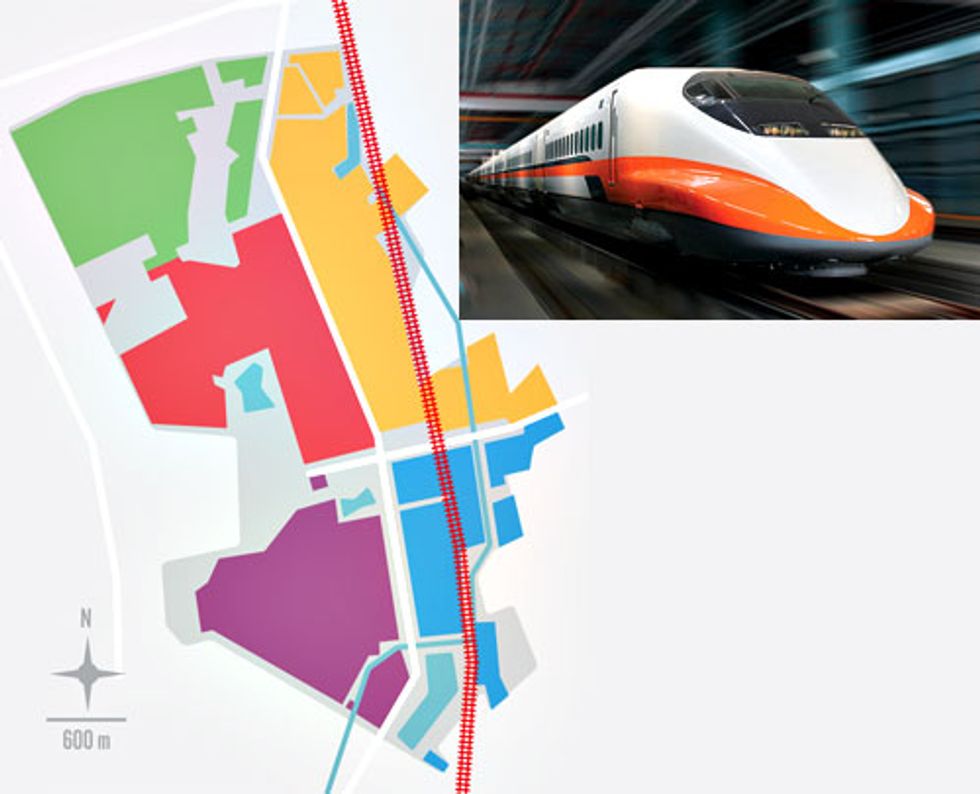Almost inexplicably, when Taiwan started developing plans 10 years ago for a bullet train to go from the north end of the island to the south, the route was allowed to conflict with plans for a new semiconductor park in Tainan. Several important foundry operations dropped out of the park in 2001 [see ”Bullet Train Shakes Taiwan’s Foundries,” News, August 2001]. How could a technically sophisticated and ambitious country like Taiwan permit a transportation project to endanger what’s arguably its most important industry?
Now, just as surprisingly, efforts to fix the vibration problems that the train was expected to cause have gone awry, giving rise to new charges of corruption and scandal. On 24 May, the cabinet-level supervisor of the science parks, Ching-Jyh Shieh, was detained by government prosecutors on suspicion of having manipulated contracting awards for vibration-mitigation technologies to favor certain individuals. Though the whole leadership of the Democratic Progressive Party (DPP), which took power in 2000, has been shaken by allegations of wrongdoing, this is the first time a politically appointed cabinet minister has been arrested and has subsequently resigned.
The latest twist in this tale began three years ago, when the government solicited design concepts for reducing vibration from passing bullet trains. Taipei-based Sheus Technologies Corp., led by a DPP contributor, proposed to stiffen the railbed’s foundation and install barrier walls containing elastic rubber pellets. In a competition with just one other design, from Evergreen Consulting Engineering Inc., also in Taipei, Sheus’s proposal won. But on-site experiments suggested that neither of the two contending designs would have satisfied the National Science Council’s goal, which reportedly was to limit noise from a train passing 200 meters from the track at 300 kilometers per hour to 48 decibels.
Evergreen went to court in March 2004 to challenge the selection of Sheus. But the following October, Sheus nonetheless was given a US $250 million contract for the construction work. Since then, lawmakers have questioned the contract because of Sheus’s seeming inability to guarantee success. And now, with the vibration mitigation work due to be finished this month, government prosecutors have determined that Sheus inflated some of the construction expenses, costing the government an estimated $125 million in unwarranted payments.
On 16 May, the prosecutors summoned Sheus’s CEO, Hung-chang Hsu, to account for the inflated costs but released him on bail without filing charges. Another National Science Council official and two engineers of China Engineering Consultants Inc., which evaluates the cost of the construction for the council, also were brought in for questioning.
Shieh, the deputy minister of the National Science Council who was responsible for the science parks, has argued that there was no reasonable alternative to covering Sheus’s costs, because no other company qualified to carry out the work. He says that the project requirements were not actually to reduce vibration to a specific level but rather to reduce it by specific amounts—by 9 dB at 200 meters from the track and by 6 dB at 400 meters away.
Science council officials claim that semiconductor makers locating in the Tainan park will not in any case be troubled by vibrations. The firms nearest to the rail line—such as Chi Mei Electronics Co., headquartered in Tainan, and United Microelectronics, in Hsinchu—have situated their foundries about 550 meters from the track. ”We don’t think the park’s operation will be affected by the train service,” said Chunâ''wei Chen, deputy director-general of the southern Tainan park administration.
The high-speed railway, built by Taiwan Shinkansen Corp., a subsidiary of the Japanese bullet train manufacturer, is set to start offering service on 31 October—more than three years behind schedule.
